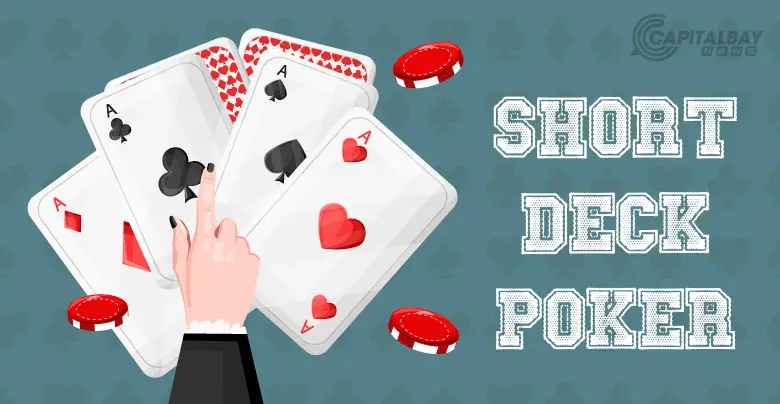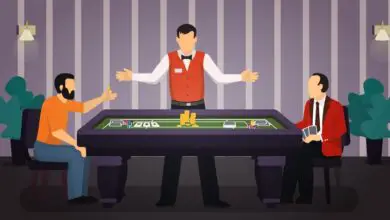All You Need to Know About Short Deck Poker

With millions of players worldwide, poker does not need an introduction. It has widely grown in popularity since its origin in the early 19th century. And the rise of online casinos has just helped it reach unforeseen places. The game is appreciated for its challenging and rewarding concept, which has won many hearts in the gaming community. What adds to its massive acceptance are the skills that the players develop when trying their luck.
Short deck poker brings people from different places to the same table that makes it sociable, no matter if it is being played in a casino or online. Since it is a chance-based game, everyone gets an equal chance of hitting the jackpot. For these reasons, it is considered to be the best casino game ever.
Poker has many variants with different gaming rules and formats. The latest one joining the league of poker is ‘short deck poker.’ In this article, you will get to know everything about this new version of poker.
What Is a Short Deck Poker?
Short Deck Poker, also known as Short Deck Hold’em or Six Plus Hold’em, is a no-limit stripped deck game. Though known to be invented in Asia around 2014, short deck poker gained traction after poker players Phil Ivey and Tom Dwan started promoting it. Due to its representation in poker tournaments, it is attracting players from Europe and the US.
This poker variant follows the same play pattern as in Texas Hold’em but uses a 36 card deck instead of a regular 52 card deck. The smaller card deck has done away with cards 2, 3, 4, and 5, leaving the deck with cards six and above. That is why it is called ‘Six Plus Hold’em.’ Here, aces can be used both as high or low-end straights, such as J-Q-K-10-A and A-6-7-8-9. The whole notion of reducing the card deck is to increase the likelihood of an amateur poker player winning the game.
How Is It Played?
The game begins with the card dealer offering each player 2-hole cards face down. The players are then required to create the best poker hand by combining their 2-hole cards with five other community cards. There are four rounds of betting comprising Pre-flop, Flop, Turn, and River, through which the game progresses.
What are the Odds of Short Deck Poker?

In contrast with other poker games, short deck poker has variable odds for hitting certain hands. Because of dramatic changes in odds, players have the strongest possibilities of hitting straights or sets. All this makes short deck poker more fun and exciting. Let us look at the odds of hitting certain starting hands:
- The average starting hands tend to be higher.
- Higher chances of hitting straight draws.
- Open-ended draws could increase the prospects of hitting your outs.
- Getting dealt three of a kind is comparatively greater.
- Flopping fewer straight flush draws and hitting them less often.
- Getting dealt pocket Queens more often.
The below-mentioned table will give you an insight into how the odds work in the short deck poker.
| Odds | |
| Starting hands | 630 |
| Getting dealt aces | 0.9% |
| Aces win percentage vs. a random starting hand | 77% |
| Getting dealt two Broadway cards | 30% |
| Getting dealt a suited hand | 22% |
| Getting dealt connectors | 22% |
| Getting dealt any pocket pair | 8.6% |
| Hitting a set with a pocket pair | 18% |
| Hitting an open-ended straight by the river | 48% |
| Getting dealt A-K pair | 2.5% |
Official Short Deck Hold’em Hand Rankings
The shorter card deck brings a change in odds for making certain starting hands compared to the usual 52 card deck. It impacts the hand ranking system. Based on the pairs and connectors, different versions of hand rankings are available. Therefore, players need to understand the combination of hole cards and community cards to win the highest possible reward. The official short-deck hold’em hand rankings from strongest to the weakest.
Here they are listed as follows:
- Royal Flush: An ace with high straight flush (all in the same suit), such as A-K-Q-J-10.
- Straight Flush: A five-card straight (all in the same suit), such as 10-9-8-7-6, all of the clubs.
- Four of a Kind: Four cards of one rank, such as 2-2-2-2.
- Flush: Any five cards (all in the same suit), such as K-Q-10-8-7, all of hearts.
- Full House: Three of a kind and a pair, such as K-K-K-Q-Q.
- Straight: Five cards in ascending order (all in the different suits), such as 6-7-8-9-10.
- Three of a Kind: Three cards with the same rank, such as K-K-K.
- Two Pairs: Two cards with the same value and the other two cards with different values, such as Q-Q and J-J.
- One Pair: Two cards with the same value, such as J-J.
- High Card: The highest card(s).
Of these, two hand rankings significantly differ from Texas Hold’em – Flush and Three of a Kind. It is hard to hit a flush with a shorter deck, which gives it an edge over a full house. Similarly, the odds of achieving a three of a kind set is higher than a straight.
Short deck Hold’em strategy

Due to the reduced number of cards in the deck and higher odds of hitting the starting hands than other poker games, short deck poker requires a different strategy to master the game. Here we highlight a few basic strategies that you must be aware of when playing this variant:
- Keep in mind the rule of 3 and 6 to calculate the odds of hitting a straight draw.
- The first strategy might result in a loss on flush draws but a gain on straight draws.
- Choose to play with pocket pairs and suited hands more often.
- Play with stronger post-flop hands.
- Making straights, full houses, and two-pair hands is much easier.
- Odds of drawing pocket aces, pocket kings, and suited cards like A-K, Q-J, Q-T, J-10, 10-9 are much stronger.
- The value offered for the top kicker and top pair hands is lower.
- Chances of winning with one pair of hands are rare.
- Play with at least 60+ buy-ins.
Short-Deck Poker Rules
Short deck hold’em is equally similar to and different from Texas Hold’em in many aspects. Consequently, the 36 card deck structure demanded new rules to make poker players accustomed to. Remember these rules of the short-deck hold’em to avoid any conflicts with other poker games and to win more hands.
- The deck contains 36 playing cards.
- The card dealer serves two cards to each player.
- Four rounds of betting (Pre-flop, Flop, Turn, and River).
- No small or big blinds are posted.
- Each player must post an ante.
- Aces could be high or low.
- A flush beats a full house.
- A three of a kind beats a straight.
Last Words
Very few poker variants get as much attention as short-deck hold’em. Despite its similarities with Texas Hold’em, playing short-deck hold’em is relatively easy and more enjoyable. The experiment of removing low-value cards has created equal chances for players to win the rewards. Other major factors contributing to its popularity are the poker rules for flush (like poker rules flush beats a full house in a game), the changes in odds, and interesting hand rankings.
With its roots in Asia, short deck poker now has fans all over the world. Though short deck poker is a game of luck, sticking to the poker basics and game rules can do wonders for you.



